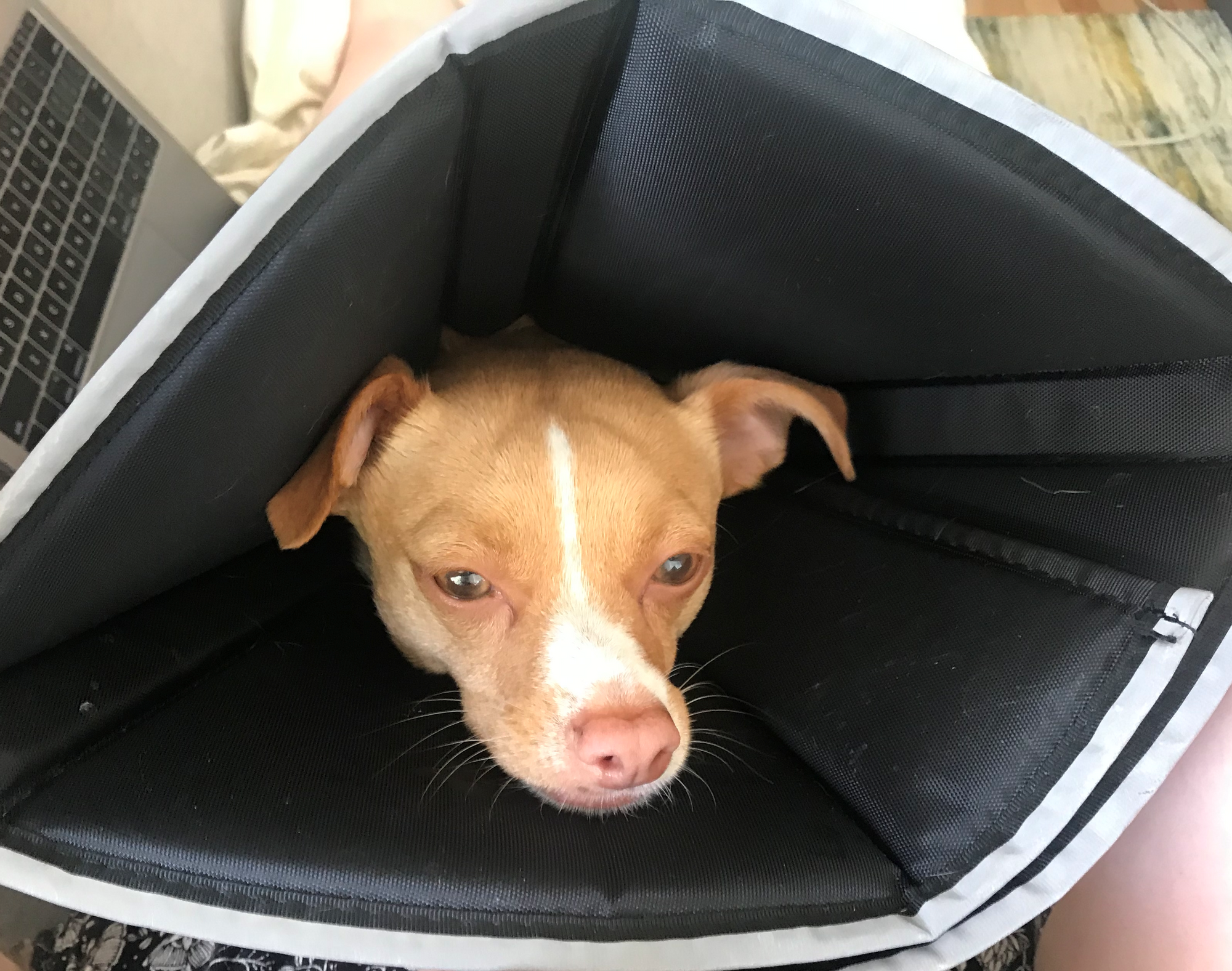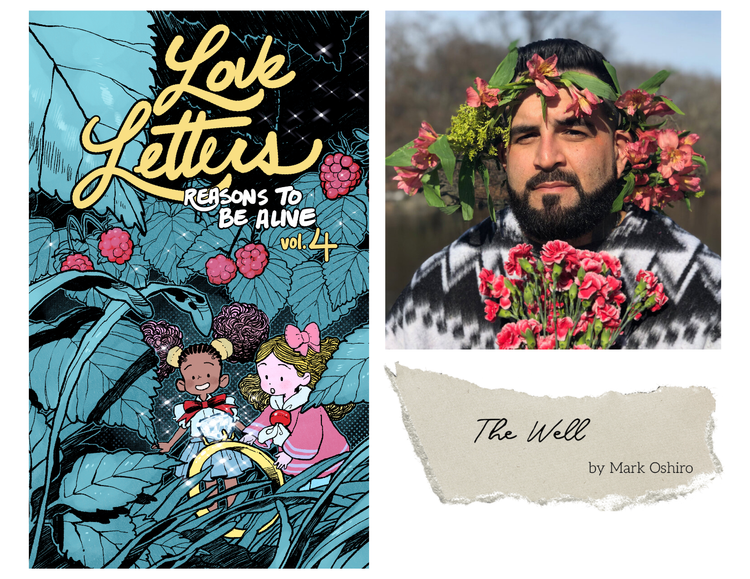Stone Soup #22: Haven't you curd? - Rhubarb Curd
Stone Soup is an ongoing quarantine feature in which I come up with a recipe that uses the impossible thing in your cupboard, without making you go to the store or wasting any of your ingredients. Last time, we made a mushroom tart.
And we’re back! The stone soup inbox ran empty for a couple of days there, but then I tweeted that it was empty and now it’s bursting. Here I thought everyone was all sorted-out, vis-a-vis kitchen problems.
Besha says:
Your tweet about an empty inbox popped up not five minutes after I looked at the five stalks of rhubarb that came in my CSA box and remembered that I forgot put strawberries in my grocery order. I can't get groceries for probably another week and I've never used rhubarb outside of strawberry-rhubarb baking. What do?
Besha followed that with a list of ingredients they currently possess and a photo of their disgruntled dog, Whiskey.

What a fuckin’ mood.
For the uninitiated: rhubarb is a weird-ass rhizome. It looks like red celery and it tastes like green apples. It has poisonous leaves, DON’T EAT THEM. In the UK they do the first Rhubarb harvest of the season by candlelight? It’s like if a space alien tried to design an earth-food based on a secondhand description of what humans eat.
We’re gonna turn it into curd.
I’ve written about curd before, in an essay that people get weirdly horny about. Hopefully no boners result from this recipe, which will be a little less prose-y and a little more direct? But hey, whatever pumps your bumps, I guess.
Enough talk. Let’s get down to
Curd
This recipe is great for anyone who is cooking with small children around the house — they’ll love Helping with it. It’s got Smashing, it’s got Straining, it’s got a Yucky Part, it’s got a Part that Feels Like Science. If you’ve got a population of small goblins to entertain, this is a great way to do it.
Step One: Juice. Curd starts with juice, so you better get juicin’. You’ll need half a cup of juice total.
This is the stage where you determine what flavor of curd you’ll wind up with. Besha has rhubarb, but you can work within a lot of variations. I don’t recommend using a juicer for this — you can get greater depth of flavor and color if you’re willing to do a little work:
- Rhubarb: Thoroughly wash the stalks, then chop them into 1” pieces. Put into a small saucepan with just enough water to cover them. Bring to a boil, then simmer for 20 minutes. Smash the rhubarb with the back of a wooden spoon, then strain what you’ve got, reserving the liquid and discarding the pulp. Rhubarb juice!
- Berries (fresh or frozen & thawed): This is a great Kid Activity. Put the berries into a big bowl, grab a potato masher or a big heavy spoon, and smash the shit out of ‘em. If a child is going to be participating in this part, use a HUGE bowl, because they will definitely go hell-for-breakfast on those berries. Once you’ve got a good mash, strain using a fine mesh sieve, or cheesecloth if you’ve got it. Reserve the liquid, discard the pulp. Berry juice!
- Citrus: Microwave your citrus fruits for 10 seconds, then squeeze ‘em real good. Strain out any pulp. Citrus juice!
Note that if you’re using any fruit other than citrus for your curd, you’re also going to need at least a few tablespoons of lemon juice.
Step Two: Keep ‘em separated. This is another great step for Small Helpers, because it can be gross and tactile. Separate eight eggs. We only need the yolks for the curd, but for fuck’s sake, don’t throw out the whites. If you don’t know what to do with them now, you can pour them into a ziploc bag and freeze them for later. Put the yolks into a heatsafe bowl or measuring cup and whisk them smooth, then set aside.
To make this yucky and fun for a tiny person, have them cup their little hands together over a bowl. Crack the egg into their hands and tell them to gently rock their hands back and forth, letting the whites run between their fingers. I did this activity with my four-year-old niece and I have honestly never seen her so delighted. Also, once the yolk was sitting in her palm all by itself, she petted it with her tiny index finger and asked me why egg yolks are so soft, and I have thought about it every day of my life since.
Oh yeah, and make sure they wash their hands thoroughly after this part of the project is over.
Step Three: Butter-cutter. Cut 8 tablespoons of butter into 10 pieces and set aside.
Step Four: Get cooking. In a medium saucepan, combine your juice with 1C granulated sugar and stir until the sugar is pretty much dissolved. Then turn on the heat. Watch the pot real close here, because once it gets boiling, it’s going to be eager to foam over. As soon as you get a good boil going, take the pot off the heat. You’ve got syrup! Great job.
Step Five: Do Science. This is a good part for kids to watch, but not to participate in. Pour about half of the syrup into the egg yolks in a very slow stream, whisking the yolks the entire time. This will slowly raise the temperature of the egg yolks without cooking them, ensuring a smooth end-product.
This process is called “tempering”, and it’s really cool. The heat and acidity of the syrup you’ve made are working together to denature the proteins in the egg yolks. Usually, proteins are all scrunched up, but tempering will force them to relax a bit. Later, when your curd cools, those proteins will work to provide the structure that gives curd a thick, rich, pudding-like texture.
Once you’ve whisked half the syrup into the egg yolks, it’s time to return everything to the pot. Slowly pour the egg/syrup mixture back into the pot in a slow, steady stream, whisking constantly. Because you raised the temperature of the eggs before pouring them into the syrup, they shouldn’t cook — instead, they’ll incorporate smoothly into the syrup in the pot.
Step Six: Let’s get thickening. Return the pot to the heat and stir, stir, stir, until what’s in the pot is thick enough to coat the back of your spoon. Don’t neglect the sides and bottom of the pot as you stir.
Step Seven: Butter it up. Here’s where this goes from good to great. Turn off the heat. Drop in one piece of butter and keep stirring until it’s completely melted and integrated into the curd. Once it’s gone, add another piece. Repeat until all the butter is gone. Don’t rush and add multiple pieces at a time — the pacing is important, because it cools the curd at the correct rate to incorporate the butter-fat without breaking.
This is also a great place to get help from a kid. You can have them stir, but in my experience, things flow a little more smoothly if you put them in charge of adding the butter. They get to feel in-charge, because they’re supervising your stirring, and they also get to feel like they’re the ones doing the cooking, because they’re adding ingredients.
By the time you’ve incorporated all the butter, you should have curd! The texture will be smooth and custardy. It will thicken quite a lot as it cools. Pour it into a jar and it’ll keep in the fridge for 2 weeks or so, but I doubt it will last that long. Put it on waffles or cake or ice cream, use it as the base of a parfait, dip shortbread cookies in it. Hell yeah.
Just the recipe:
Rhubarb Curd
- Wash your rhubarb and chop it into 1” pieces.
- Put rhubarb into a small saucepan with just enough water to cover it. Boil 20 minutes, then gently mash and strain, reserving all liquid and discarding pulp. You’ll need .5C of this liquid; you can use any extra in cocktails, or add to fizzy water for rhubarb soda.
- Separate 8 eggs, reserving the yolks (freeze those egg whites!). Whisk the yolks smooth in a heat-safe bowl or measuring vessel. Cut 8 tbsp of butter into 10 pieces. Juice half a lemon.
- Combine the lemon juice, the rhubarb juice, and 1C sugar in a medium saucepan. Stir to dissolve the sugar, and put over medium-high heat. Bring to a boil, then remove from the heat. You made syrup!
- Slowly drizzle half the syrup into the egg yolks, whisking constantly.
- Slowly return the syrup/egg yolk mixture to the pot, off the heat, whisking constantly.
- Return the pot to low heat. Stir until what you’ve got is thick enough to coat the back of a spoon.
Turn the heat off. Add the butter, 1 tbsp at a time, stirring until the butter is completely incorporated before adding more.






Member discussion